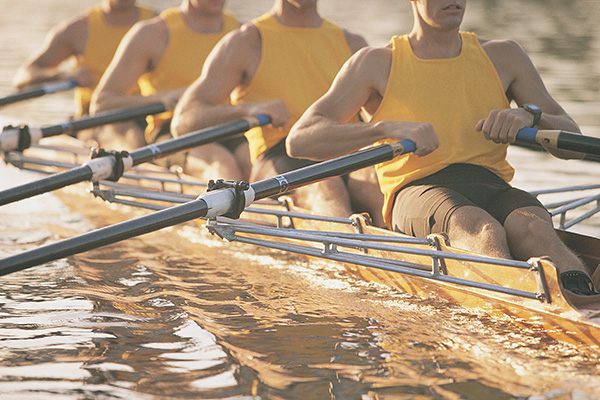
By Erin Avery, D.Min.
I am a former dual-sport Division I athlete and am a youth sports coach (in my copious free time, while I’m not running a consulting practice, mothering four children and teaching for the University of California, Irvine.)
Does this pace of life sound familiar to anyone? We are all trying to do the best that we can with the circumstances that we’ve been given.
So, when I was invited to attend a virtual conference this month led by Chris Chase, the head of U.S. Rowing’s initiative to revamp the American Developmental Model (or ADM) which essentially is a pipeline from novice rowers to the Olympic podium, I seized the opportunity. I was curious about these “changes” as a parent of rowers and a former collegiate rower. I also have a special propensity toward mental health and, when Chase shared with us that statistically 70 percent of childhood athletes quit a sport by the time they’re 14 years old, it was confirmed to me that U.S. Rowing is not the only entity that should be rethinking its approaches.
Connie Draper, an internationally recognized rowing coach and specialist on biomechanics, spoke to us at length about the developing body of a young athlete. From ACL tears and hip separation, to spinal fractures due to dance or rowing, our children’s growing bodies are minefields sown by repetitive activities without the compensatory muscle group strengthening. From my vantage point over the last 20 years as an educational consultant, working with students applying to college and boarding school, I have seen the “more is more” mentality as we funnel more funds into test prep and more funds into private coaching and more funds into elite and specialized club sports teams.
I admit that I have been part of the audience listening to the long-term effects of burnout, devastating injury from overuse and the mental health fallout of competition pressure and unhealthy parental feedback. But I nodded my head and thought, “Well, other people’s children can play multiple sports, avoid specialization and diminish their competitive pressure but I have ice hockey players, field hockey players, rowers and they simply can’t take a season off to do gymnastics for flexibility!”
Then, last night, I sat down with my ice hockey player and she and I watched, “King Richard,” the new film about Venus and Serena Williams and their father Richard’s role in their rise to professional tennis stardom. In a bold move, he forbids the girls from playing any Junior Circuit matches for three years prior to Venus going pro at age 14. This broke with all conventional knowledge up to that point. Richard Williams witnessed the stress and burnout and he had his eyes fixed on the long game. He repeats throughout the film to “just have fun” and that he wants them to “just be kids.”
I want to encourage us all to “zoom out” and consider the long game for our own children. What is our end goal for our children?
Yes, we want them to be competitive in a very competitive world. We may be desiring (or be depending on) a collegiate recruitment offer to either partially fund their education or create an advantage in a brutally selective top-tier university system that pushes recruited athletes to the head of the admissions line.
But why then, according to U.S. Rowing, are American rowers the fastest, fittest athletes on the ergometer (the rowing machine), but earned not one medal in the last Olympics?
We may be sacrificing process for outcomes. We are American. We want results. But therein lies the rub. We are grinding out performers, but are we missing the forest for the trees?
The vast majority of collegiate rowers retire after college, never to return to the sport of rowing in their lifetime. How might we course correct to avoid stripping our youth sports of the joy that encourages lifelong participation?
The Italians play 45 minutes of pickup soccer prior to most rowing practices. The Norwegians concentrate on building athletes first through a series of strength-building exercises, focusing on mobilization and flexibility simultaneously. Other European countries have monthly field days for sports teams to compete in a series of competitions that are completely removed from the primary sport of the team. In the Netherlands, daily, senior citizens practice stick handling in field hockey social clubs across the country.
This fall, four students died by suicide at Worcester Polytechnic University. The post-pandemic mental health “other shoe” is about to fall; indeed, it is falling.
So, whether our children are prodigies in tennis or STEM, crew or chess, let’s help to steward their gifts but remind them that life is about the long game. Balancing the depth and breadth of life’s offerings is arguably a spiritual discipline. Because anyone can peddle a bicycle going fast; the real challenge is balancing while peddling slowly.
Erin Avery is the author of “The College Labyrinth: A Mindful Admission Approach” (March 2020) and her educational consulting practice founded in 2003 is based in Fair Haven, serving both a domestic and international clientele. She teaches aspiring educational consultants through UC Irvine’s Division of Continuing Education.
The article originally appeared in the January 27 – February 2, 2022 print edition of The Two River Times.















